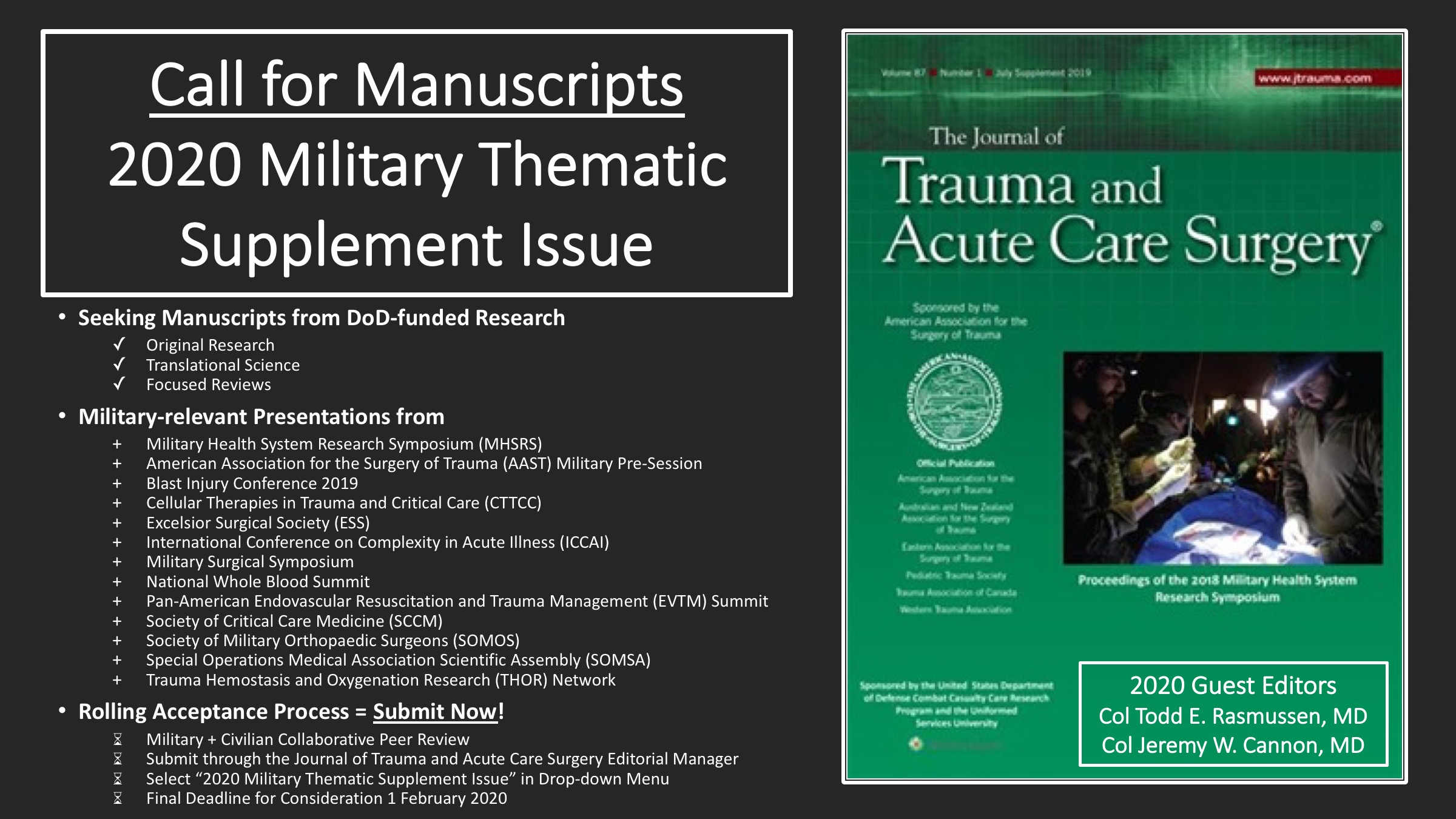
Military Minute
The Combat Casualty Care Research Program (CCCRP) and the Uniformed Services University of the Health Sciences (USU) have once again sponsored a Military Supplement to the Journal of Trauma and Acute Care Surgery. This Supplement is slated to appear with the August 2020 issue of the Journal.
This annual supplement began in 2006 with the encouragement and support of then-Editor-in-Chief, Dr. Basil Pruitt. This inaugural supplement appeared during a time of intense conflict in both Afghanistan and Iraq. This Supplement featured original studies and state of the science reports originating from the DoD Advanced Technology Applications for Combat Casualty Care Conference (ATACCC) and the nascent DoD Joint Trauma System (JTS). As the ATACCC meeting expanded and evolved into a much larger, DoD-wide medical research venue, Military Health System Research Symposium (MHSRS), the Military Supplement also evolved. Now with the tremendous support of Journal Editor-in-Chief Dr. Gene Moore and Associate Editor, Dr. Steven Shackford, this Supplement is approaching its 14th consecutive issue and has become a much-anticipated annual fixture for the military and civilian surgical community. High-impact, military-relevant publications in this forum have continued as an ever-present reminder of the vital importance of translational science and focused empiricism on improving combat casualty outcomes.
This year, guest editors, Col Todd Rasmussen and Col Jeremy Cannon, expanded the scope of the Supplement. While submissions from the annual MHSRS conference continue and remain highly encouraged, we have deliberately broadened the aperture to include presentations from other military-relevant conferences (Figure). In a complementary fashion, we continue to welcome and have now expanded the number of focused reviews and state of the science articles to both highlight and amplify cutting-edge combat casualty research funded by the DoD.
We believe this Supplement will continue to prove relevant to the civilian readership of the Journal as well. Applying military lessons learned has never been more relevant as demonstrated by our national response to the COVID-19 pandemic, and the theme of this year’s supplement speaks directly to the vital partnerships between military and civilian trauma for the mutual aid and benefit of our respective populations.
Thank you to the many contributors and reviewers who have made this supplement possible. We have learned immensely from your insightful submissions, and we appreciate the timely critiques from our volunteer cadre of reviewers. And finally, thank you to the CCCRP, USU, and the Journal of Trauma and Acute Care Surgeryeditorial leadership for affording us this opportunity to showcase the knowledge products of the DoD’s vital research engine.
